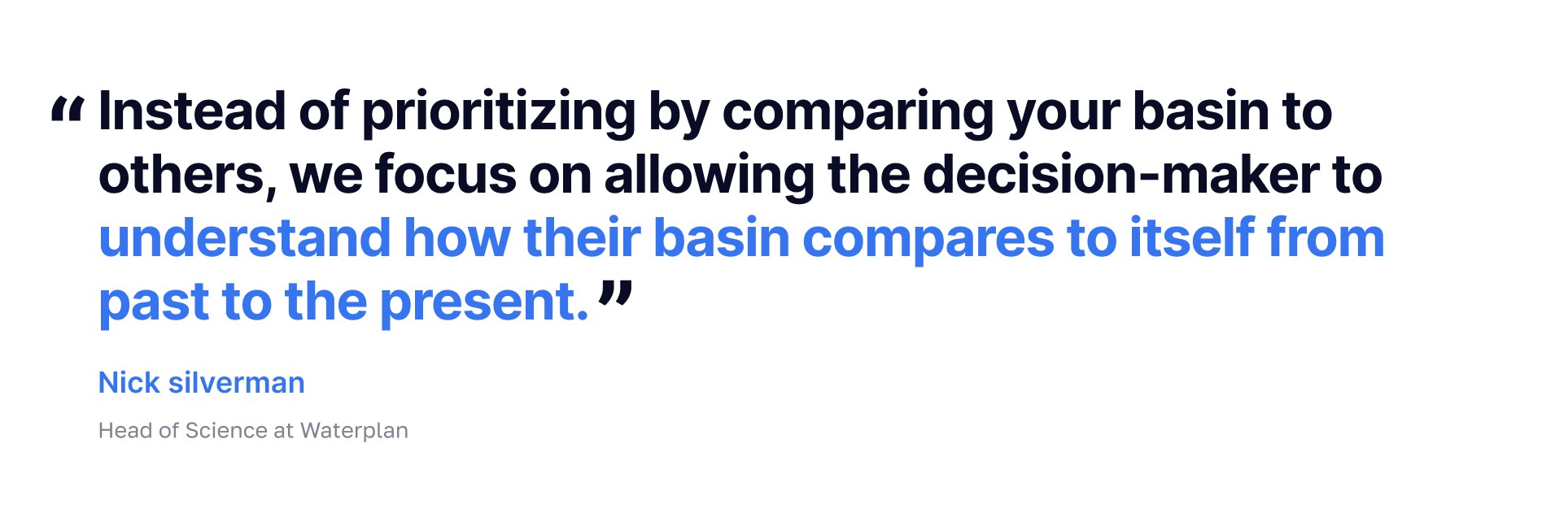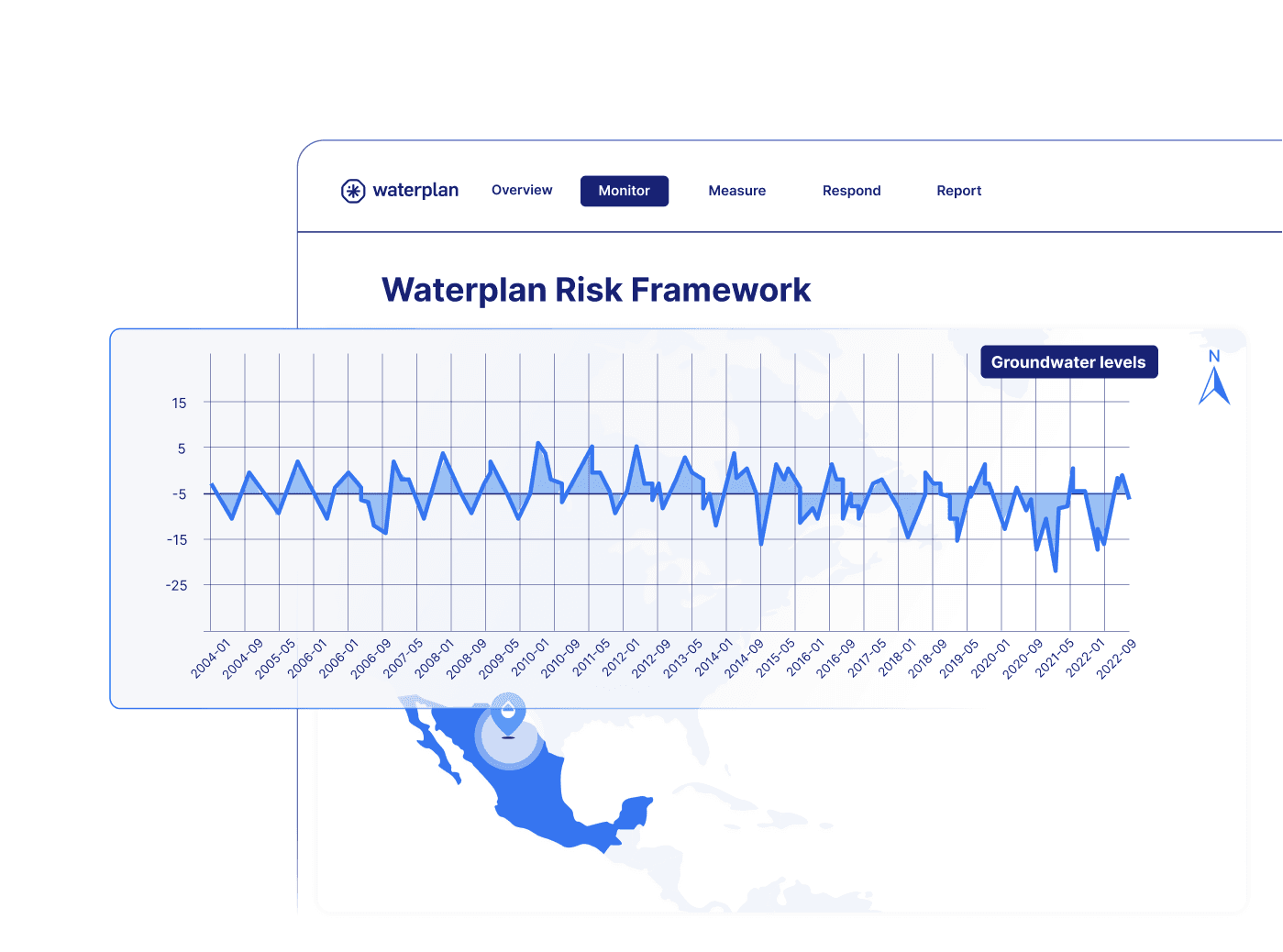The biggest hurdle in water resource management
The truth about water resource management is that we lack a comprehensive understanding of how and when our water resources are changing across the landscape and over time. As a hydrologist, it pains me to admit this, but being honest with ourselves and decision-makers is essential when dealing with the fate of this critical global resource.
Dealing with large uncertainties is a common challenge in decision-making. To make progress, we must gather as much relevant information as possible, minimize risk, learn from outcomes, and repeat the process.
This idea is nothing new in natural resource management. In fact, it has a name: Adaptive Management. In 1978, the idea of Adaptive Management was born by fisheries biologists Walters and Hillborn. The idea is quite simple, it is the process of making decisions that are based on learning by doing and adjusting future decisions to reflect new conditions and lessons learned.
While the concept of Adaptive Management is straightforward, its implementation is complex. Perhaps the biggest hurdle is the accurate monitoring of conditions that can inform decisions and allow for better understanding of the wheres, whens, and hows of water resource management.
This is where the temporal, or time, component of water resource management comes into play. To make informed decisions we need to know the most relevant information available and, to learn from those decisions, we need to understand the past as well as the present.
Waterplan’s Dynamic Risk Framework
We developed Waterplan’s Dynamic Risk Framework to fill this role in the water resources community by providing decision makers with the most recent and relevant information they need to make informed decisions and learn from past behavior.
While other risk frameworks, such as Aqueduct and Water Risk Filter, provide valuable insights into baseline conditions across large regions, continents, and even the entire globe; our framework focuses on how things are changing over time in order to prioritize, manage, and learn from the characteristics of past and present behavior within a basin.
For example, a manager may want to start with a baseline assessment to understand where to focus their efforts, but then, end with our Framework to manage and learn adaptively.
You can think about it like when you were a kid; how your mom told you not to compare yourself to others, but instead focus on being your best self. This is similar to the strategy of the Dynamic Risk Framework. Instead of prioritizing by comparing your basin to others, we focus on allowing the decision-maker to understand how their basin compares to itself from past to the present.

A real world example
Let’s consider a real-world example in Mexico. The graph below illustrates the changes in groundwater levels (cm/month) over the past 20-years. While the average baseline scarcity risk for this basin may be medium when compared to other basins globally, looking at the changes over time offers additional critical information.

First, there is strong seasonality of groundwater levels indicating that water availability is fluctuating on an annual basis. Increasing in the fall and winter months and then decreasing in spring and summer. This consistent seasonality allows for long-term management decisions that could take advantage of this basin characteristic. For example, investing in storage to flatten out availability or even changing the timing of demand to better match the natural fluctuations in water resources.
In addition, the variability (amplitude) and intra-annual noise appear to be increasing, indicating higher uncertainty from year to year and within each year. This suggests a need for closer monitoring throughout the year to make more frequent decisions and adapt to real-time conditions.
Perhaps the most significant observation is the noticeable trends across the data. At the beginning of the time period groundwater levels were increasing, then around 2008 they flattened, and during the most recent 10-years they are decreasing quite significantly.
It is hard to know from the figure whether these trends are driven from changes in policy, climate, or consumption. Likely it is some combination of all three. With more local knowledge, a decision-maker may be able to learn how changes in these three drivers specifically impact their water availability and plan accordingly.
Groundwater resources are not infinite!
Whether you understand the history of the local water resources or not, it is clear that there is a strong decreasing trend in groundwater levels, it is recent and ongoing, and it appears to be increasing. This should be an alert for any decision-maker; changes in water management within this basin are critical and that the current trajectory is unsustainable. After all, groundwater resources are not infinite!
Risk assessment is multi-dimensional, considering hazard, exposure, vulnerability, and impacts from and to human activities. While comparing risk across basins helps prioritize efforts globally, understanding how risks evolve over time is crucial to effectively respond to water resource challenges. Ignoring this critical dimension of risk limits our potential solutions and obscures half of the water resource story.


